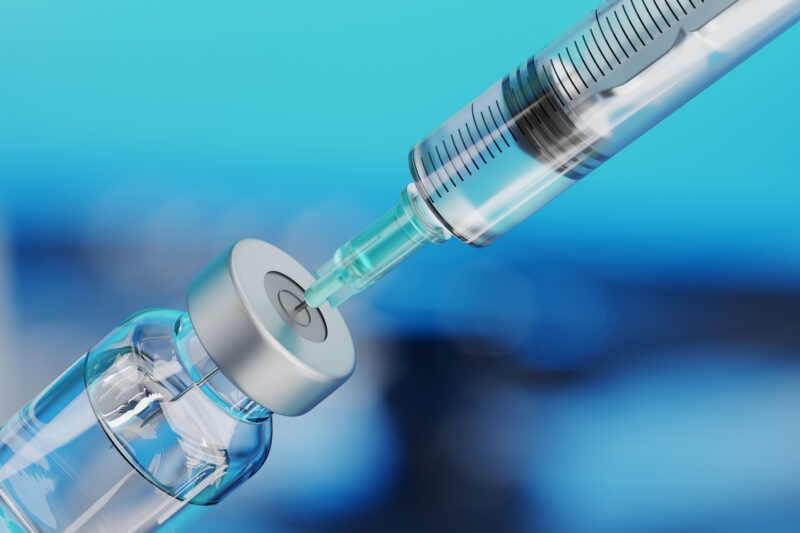What’s Trending: Parenteral Drug Development & Manufacturing
What are some key trends and issues arising in parenteral drug development and manufacturing? From more complex molecules and modalities and sterile drug-product capacity market shifts, DCAT Value Chain Insights takes an inside look.
What is Trending: Parenteral Drug Manufacturing
To gain a perspective on the key trends in parenteral drug development and manufacturing, DCAT Value Chain Insights gained the input of industry members. Participating in the roundtable were Claus Feussner, Ph.D., Senior Vice President, Development Service, Vetter Pharma, and John Cameron, Ph.D., Director, Global Injectables Platform, CordenPharma International.
Major trends in parenteral drug development
Question: What would you identify as three key issues driving parenteral drug development, either in terms of types of products being developed, regulatory issues, or other issues impacting commercialization?

Vetter (Feussner): The industry is witnessing a significant shift towards the development of complex and large-molecule biologics, e.g. for targeting specific cancer indications via immunotherapy.
Another trend is the move from blockbuster drugs (i.e. glucagon-like peptide 1 (GLP-1) agonists) to a co-existence of blockbuster medications and small-batch products targeting rare diseases. This shift is driven by the increasing prevalence of rare diseases and the potential of cell and gene therapies to provide effective corresponding treatments. The dynamic nature of cell and gene therapies often requires specialized manufacturing processes. Developers are not only exploring new methods but testing different production approaches to meet the increasing demands of diverse patient populations.
Additionally, the industry is experiencing an ongoing transition towards improved patient convenience through self-administration in the comfort of their own home. This shift aims to reduce clinic-based management, enhance patient adherence, and optimize resource utilization. As a result, many injectable drug products are seeing new, patient-friendly delivery systems to support at-home administration.

Cameron (CordenPharma): I would point to three main trends: (1) long peptides in new drug applications (NDAs) and biologics license applications (BLAs); (2) new complex modalities; and (3) sterile drug-product capacity market shifts.
Long peptides in NDAs and BLAs. Prior to 2020, synthetic peptides of greater than 40 amino acids in length were essentially treated, from a regulatory perspective by the US Food and Drug Administration (FDA), the same as small molecules. From March 23, 2020, onwards, these peptides started being considered as biologics, like antibodies, viruses, and living cells such as stem- or CAR-T cells. While this regulatory shift placed a demand on most CDMOs to adapt and set in place the necessary facility and process upgrades to their API sites, these upgrades were not necessary at injectables drug-product sites that had already manufactured biologics. CDMOs that provided an integrated supply of drug substances and drug products could adapt quickly and share best practices.
New complex modalities. Synthetic and biological drug substances that are used in sterile injectable drug products are becoming more complex. Examples of these include multi-cyclic and multi-functional peptides, peptides conjugated to lipids, and oligonucleotides conjugated to peptides, antibodies, and sugars (e.g., or N-acetylgalactosamine [GalNAc]). The function of these conjugates can be to improve half-life in plasma or to target the active pharmaceutical ingredient (API) to a particular tissue. A recent injectable drug-development trend is to use these complex drug substances at high concentration, causing them to be potentially viscous, prone to gelling and aggregation, or to present difficulties during aseptic filtration. In this case, thorough formulation development is required to prevent such problems from occurring during manufacturing while mitigating the loss of expensive drug substances. Lastly, these complex modalities, in an injectable drug-product site require dedicated and custom-fitted analytical equipment and specially trained personnel familiar with their end-to-end use in large-scale parenteral manufacturing.
Sterile drug-product capacity market shifts. In recent news, there has been a movement in market ownership of injectable drug-product capacity from CDMOs to Big Pharma, for the purpose of dedicated in-house manufacturing of their large-scale commercial medications. This outsourcing to insourcing trend, which has been cyclical for decades, marks a potential paradigm shift in the industry, kicking off a new set of advantages and disadvantages for innovators and suppliers alike. At the top of this list is the challenge of conflicting capacity allocation and prioritization, which could particularly affect small to mid-sized biotechs in their earlier stages of development, causing them to re-assess their sterile manufacturing options long term. CDMOs must, therefore, respond with flexibility to secure the supply chain amid these outsourcing shifts.
Complex sterile injectables
Question: Looking at complex sterile injectables, specifically, what would you identify as key recent trends impacting development and manufacturing overall and/or for specific complex drug-substance type (e.g., antibodies, mRNA-based products), complex dosage forms (e.g., emulsions, liposomes, nanoforms), or drug-device combinations (e.g., prefilled syringes, auto-injectors).
Vetter (Feussner): The rise in at-home administration of injectables is a key trend, emphasizing user-friendly options, such as pens/ autoinjectors and wearables. These innovations focus on simplicity, convenience, and improved compliance for patients.
Digital transformation and digitalization, including artificial intelligence, machine learning, and robotics, are positively influencing efficient production processes of drug products. These technologies streamline operations, enhance efficiency, and provide valuable insights into each treatment’s unique development process.
Sustainability has surfaced as a priority in the pharmaceutical packaging industry, driving transformation towards more eco-friendly materials, increased recyclability, and reusability. However, challenges persist in implementing these solutions for primary packaging due to strict regulations and quality standards. Injection devices, such as autoinjectors and pens, are adopting more sustainable designs and materials, and the industry is actively collaborating on eco-friendly secondary packaging, including all paper options. As a result, the industry is balancing its commitment to sustainability, regulatory standards and patient safety.
Cameron (CordenPharma): Since the pandemic and the development of Moderna’s Spikevax and Pfizer–BioNTech’s, Comirnaty COVID-19 vaccines, we have seen a lot of interest in the development and manufacture of lipid nanoparticles (LNPs) and polymeric nanoparticles (PNPs) as an effective means for introducing a variety of therapeutic nucleic acids, especially mRNA, into cells, not just for vaccines, but also for use in areas such as oncology and metabolic diseases.
These novel complex APIs require specific cold-chain (-80 oC) management to safely store the mRNA cargo, specific formulation development to manage potential short hold times, specialized magnetic levitation pumps to reduce LNP sheer during tangential flow filtration purification steps, and of course, specific analytical equipment to analyze particle size, distribution and z-potential encapsulation efficiency, lipid / API identity and concentration, polydispersity index, and microbiological analysis during and after fill–finish.
Another general trend within the pharmaceutical industry has been to move away from any animal-derived products where possible. For example, in LNPs, where sterols such as cholesterol are a vital component of the nanoparticles, animal-derived cholesterol is being replaced by non-animal origin sterols, such as plant-origin cholesterols, and beta-sitosterol, which is a plant-derived structural analogue of cholesterol.
Regulatory issues
The European Commission (EC)’s revised Annex 1 – Manufacture of Sterile Medicinal Products became effective in August 2023. From a manufacturer’s view, what would you identify as the key issues that went into effect with the revised rules?
Vetter (Feussner): The EU GMP Annex 1 is considered one of the most important regulations for the manufacture of sterile pharmaceutical drug products. Some of the key issues that went into effect with the revised rules include an emphasis on contamination-control strategy and compliance-management systems. Regulatory requirements in the pharmaceutical industry continue to increase, resulting in new principles for manufacturing, handling and testing, and quality-risk management. New requirements for aseptic techniques, including equipment and processes, have been implemented to further enhance the overall quality and safety of sterile drug products.
Cameron (CordenPharma): Even though Annex 1 is a European regulation, the ramifications of it have been felt globally, especially in the United States. Many health agencies have contributed to the Annex, and it is safe to assume that these same agencies, including the FDA, will be directly auditing for Annex 1 compliance or via mutual recognition with the European Medicines Agency.
Since humans are the single biggest risk for contamination, the changes central to Annex 1 focus on minimizing human interaction with the products by implementing a single contamination-control strategy document. This facilitates the identification and elimination of any risk to sterility assurance, and places greater importance on technologies in aseptic drug-product manufacturing, such as robotic filling, clean-in-place, and sterilization-in-place as well as automated lyophilization loading.
Digitalization and automation
Question: Increased digitalization in the form of greater automation or the adoption of new tools, such as artificial intelligence/machine learning, is an important across all of manufacturing, including parenteral drug manufacturing. Can you outline the key trends in this area on an industry level?
Vetter (Feussner): Harnessing a forward-looking approach with artificial intelligence (AI) and machine learning (ML) is a key trend in digitalization. AI and ML enhance efficiency while maintaining human oversight.
The integration of robotics is also becoming more popular to streamline operations, particularly for tedious or repetitive tasks. Robots not only improve the efficiency of assembly-line style work but also enable human employees to redirect their focus to other, more challenging and impactful tasks. Transforming to adapt to new technologies requires human understanding of complex and highly regulated production processes to find proper technological solutions that enhance them, without negating the high levels of quality that customers expect. This is prompting an additional move toward upskilling and reskilling, as production employees consequently have more time to use for human-driven, non-routine working steps.
RPA technology (robotic process automation) is also used as a process optimization approach for repetitive, manual, and error-prone activities. Such or similar forms of artificial intelligence can also be used for factory processes to help shape the smart factory of tomorrow. Possible areas of application are predictive maintenance, data analysis or intelligent-factory assistance systems.







